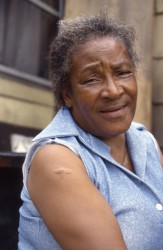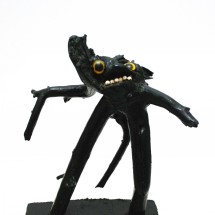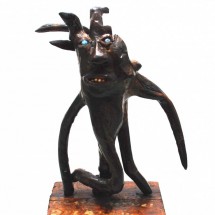Bessie Harvey (American, 1929–1994)

1987, photo by William Arnett
Born Bessie Ruth White in Dallas, Georgia, Harvey was the seventh of thirteen children born to an alcoholic mother and a father who died when she was a child. Later, as a single parent herself, she raised eleven children from two abusive marriages, and creating art proved to be a sanctuary from her troubles. Beginning at an early age, she drew strength from her Christian faith and found comfort in her ability to give shape to her frequent visions using ordinary objects. Harvey found inspiration and consolation in her natural surroundings. She often prayed aloud and talked to trees, birds, and clouds. She began her artistic endeavors in the 1970s, when she was middle-aged. In her makeshift basement studio, she added paint, putty, shells, hair, clothes, and other items to wood in order to give vivid physical form to the spirits she perceived.
The two sculptures on view in the exhibition are fine examples of the sculptures made from found objects for which she became known. They typify her primary motivation for making art, which was to liberate spirits and souls she believed were captured in the branches of trees. As she explained, “I have a feeling for Africa. I see African people in the trees and in the roots. I talk to the trees. There’s souls in the branches and roots. I frees them.” During her lifetime, she received much acclaim for her powerful, visionary, and sometimes grotesque figures, many of which reside in major private and public collections such as the American Folk Art Museum, the Whitney Museum of Art, the Studio Museum in Harlem, and the Knoxville Museum of Art.
- Untitled (Black Figure)
- Belahaw


